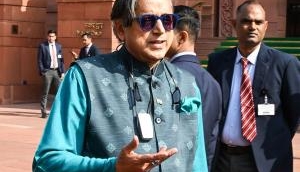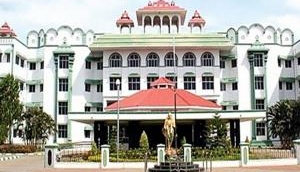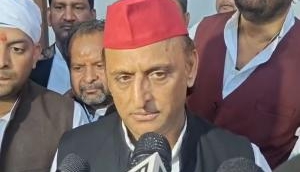
In the year 1980, a young man graduated from Elphinstone a leading college in Bombay (now Mumbai) with stars in his eyes.
Schooled at the prestigious Cathedral and John Connon School, Mumbai, he had excellent grades, an outstanding academic and co-curricular record. At the time, it seemed that all the roads to a successful corporate career were open to him. He had admissions to three of the top management institutes in the country - Indian Institute of Management at Ahmedabad, Bangalore ( now Bengaluru) and Calcutta (now Kolkata).
This young man sprang a surprise on everyone by opting for a nascent institution, IRMA (Institute of Rural Management, Anand) in Gujarat, taking admission in its very first batch. This young man was #Sanjoy Ghose and the stars in his eyes were not for his personal success and glory but for the most down-trodden of our society. His sole concern was how to make life better for those who were living on the margins of a development that can very easily bypass them. This concern is what marked Sanjoy's journey as a grassroots social activist guiding all the steps he took towards academic excellence and professional achievements.
On completing post-graduation from IRMA, and a brief period of work on the ground, Sanjoy was selected for the prestigious INLAKS Foundation Scholarship in 1984 at Oxford University, UK . Here he pursued agricultural economics. On his return, he chose to work at the grassroots, with desert communities in Western Rajasthan. As Founder Secretary of URMUL ( Uttari Rajasthan Co-operative Milk Union Limited), Bikaner, his concerns covered livelihoods, education, health and education for communities living in the harsh region.
Community participation in all of this was the key. He worked assiduously to build local leadership and enable them to take charge of their development path.
Sanjoy and his family - his wife Sumita and their children Joyita and Anando spent their early years ( 1986-1995) at URMUL. During the period Sanjoy bagged the Hubert Humphrey fellowship. He then spent a year ( 1988-89) at the illustrious institution - John Hopkins Bloomberg School of Public Health, USA.
By 1995, URMUL interventions that had expanded to address concerns of the poor in Bikaner, Jodhpur and Jaisalmer regions was ready to be handed over to the community leadership built under Sanjoy's tutelage. This allowed him to shift base to another region in the country that faced its own and very different challenges.
In 1996 Sanjoy moved to Assam, to a small riverine island, Majuli in the midst of the mighty river, the Brahmaputra. Every year during monsoons, the island faced devastating floods. Large chunks of the island had already been lost due to erosion. With a small team of committed social activists, he began work under the banner of AVARD- NE (Association of Voluntary Agencies for Rural Development, North East.)
The team mobilised the community to work towards low-cost effective solutions for both flood control and soil erosion. This held out a hope for a beleaguered region and a community, distraught by recurring floods. However, this promising path, the ground-swell of local support that the work received -was tragically cut short. On #4 July 1997 Sanjoy Ghose was abducted by a militant outfit active in the region, the #ULFA ( United Liberation Front of Assam) Sanjoy was only 37 years old at the time. It has been 20 years since.
Sanjoy's disappearance has been devastating for his family, his large circle of friends, associates and like-minded individuals. It was also a body blow to all that he stood for, built up -a development model based on the needs of local communities, driven by their aspirations for change.
Grassroots social activism undoubtedly defined Sanjoy Ghose. His life was devoted to work for the poorest and most marginalsed communities.
There was however another aspect to his persona, one that propelled him towards articulating development issues on the ground through writing. Not only was he erudite, he had the unique advantage of having his ears to the ground, his finger on the pulse of the very people he served. All of this he translated into articles that the Indian Express ran as a series in a column aptly named, #"Village Voice"
Published articles in a leading English mainstream media on issues that were still uncommon in newspapers at the time -was laudable in itself. But Sanjoy was not looking for personal or professional recognition. He wrote solely with a spirit to draw the attention of the urban elite to rural issues - the section of society that accesses news and forms views through English language newspapers. This section of society meant opinion leaders, policy influencers and policy-makers. And this was the target readership that Sanjoy sought to reach.
The media has been a powerful tool that 'mirrors' the life of a nation in its diverse aspects. Sanjoy Ghose saw in this an immense potential to connect the voices of the rural marginalised; those who remain in the shadows of development. It is these voices that are 'unheard' and indeed these voices that policy makers must listen to and take heed while planning. In a nutshell, Sanjoy was looking at media advocacy- one that would be driven by perspectives of the rural marginalised.
He could see that what had begun as his column 'Village Voice' could very well extend to many others who are connected with grassroots development. It was this vision that led Sanjoy Ghose to establish #Charkha on 24 October 1994. Charkha in a sense was an attempt to institutionalise the success of the "Village Voice" experience, to broaden its scope, to bring in more writing talent and different geographies.
The move was hailed by several leading media persons who Sanjoy consulted at the time. Many lauded it as an idea far ahead of its times. Indeed it was. It became a precursor for what is now popularly termed as " #Development Communication", now taught as a curriculum in several media institutions.
Sanjoy's vision has survived simply because it touches upon a home truth. The voices of those at the bottom rung of the social ladder need to inform policy-making processes of the day. This makes for inclusive development.
Charkha has since upheld this vision articulated in its mandate "To contribute towards building a harmonious, inclusive society empowered by knowledge".
Over the last more than two decades Charkha has translated this into an expansive engagement with rural marginalised communities across several regions in the country.
Through its #Tri-lingual Feature Service in Hindi, English and Urdu the organisation continues to place their perspectives as articles in the media across the three languages. Charkha is making all attempts to live up to a phrase coined at the time of its founding " Spinning Action into Words"!
The views expressed in the above article are that of Sujata Raghavan of Charkha Development Communication Network.
-ANI







![BJP's Kapil Mishra recreates Shankar Mahadevan’s ‘Breathless’ song to highlight Delhi pollution [WATCH] BJP's Kapil Mishra recreates Shankar Mahadevan’s ‘Breathless’ song to highlight Delhi pollution [WATCH]](https://images.catchnews.com/upload/2022/11/03/kapil-mishra_240884_300x172.png)

![Anupam Kher shares pictures of his toned body on 67th birthday [MUST SEE] Anupam Kher shares pictures of his toned body on 67th birthday [MUST SEE]](https://images.catchnews.com/upload/2022/03/07/Anupam_kher_231145_300x172.jpg)






